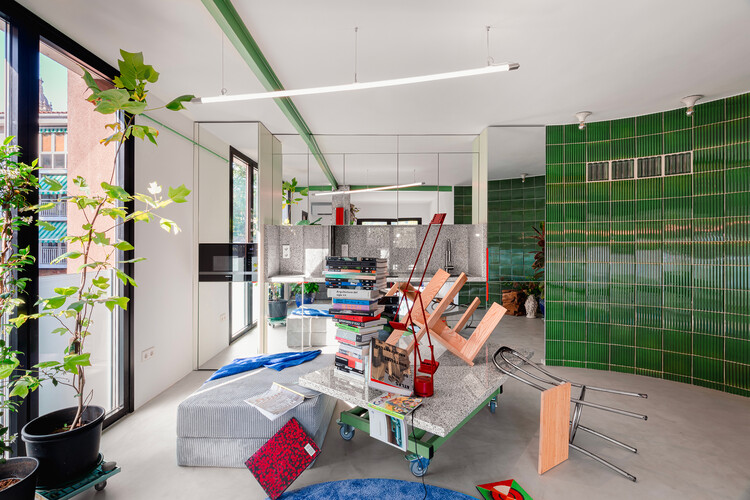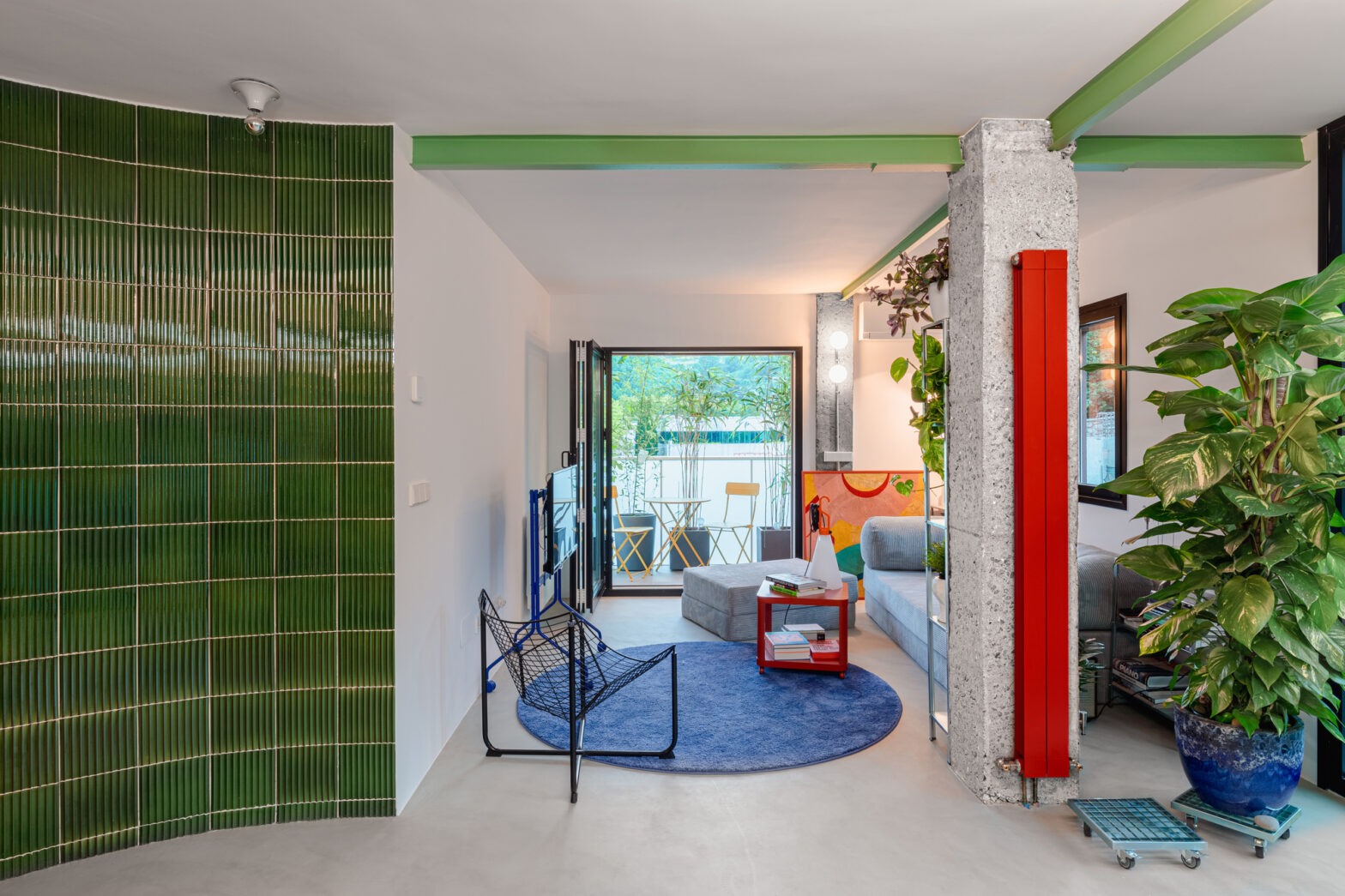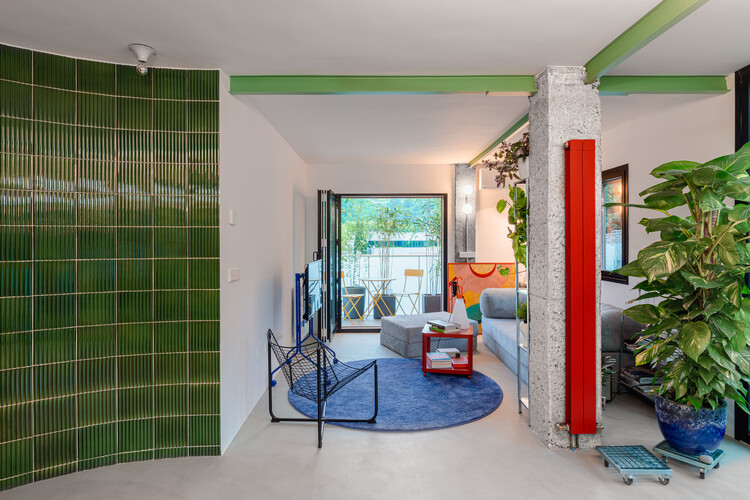
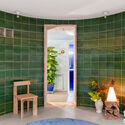
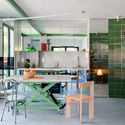
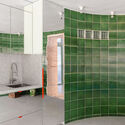
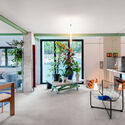

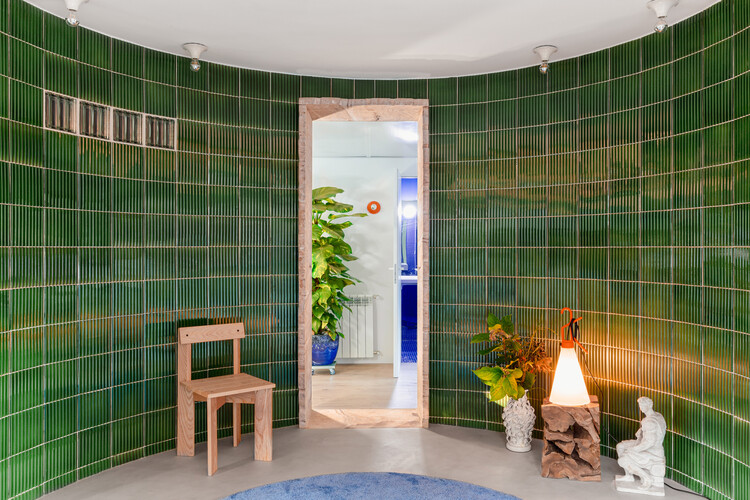
“The Unplanned Domestic Prototype” is created as a critical experiment in an 80 m² apartment in a building constructed in 1966 as a result of the policies of the 1959 Stabilization Plan in Spain. This plan, aimed at the country's economic recovery, promoted the creation of minimal, standardized and compartmentalized housing with the aim of functionally separating domestic life and making it more efficient. In this context, the apartment was designed under the rigid premises of the nuclear model of life at the time, which was characterized by closed and limited spaces.
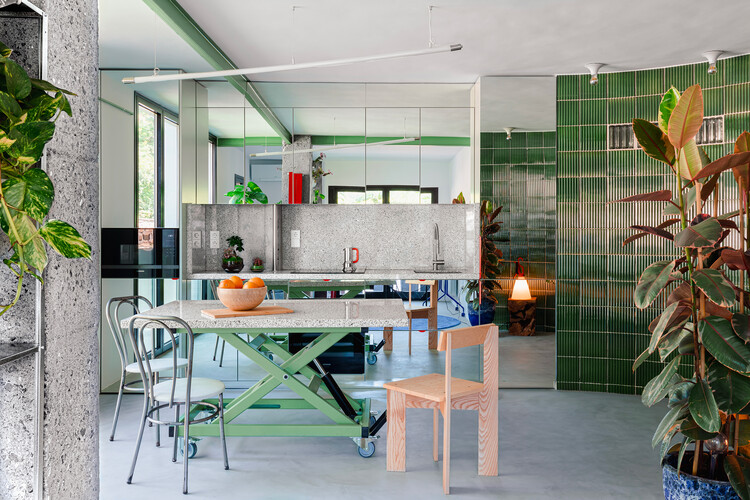
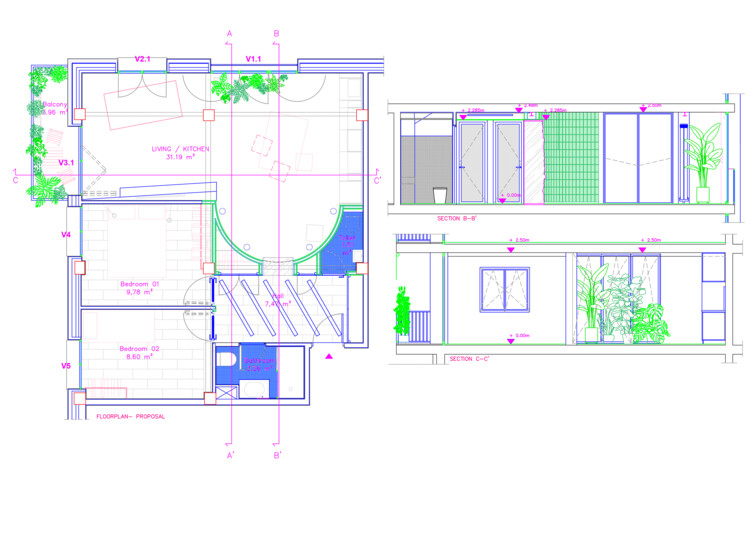
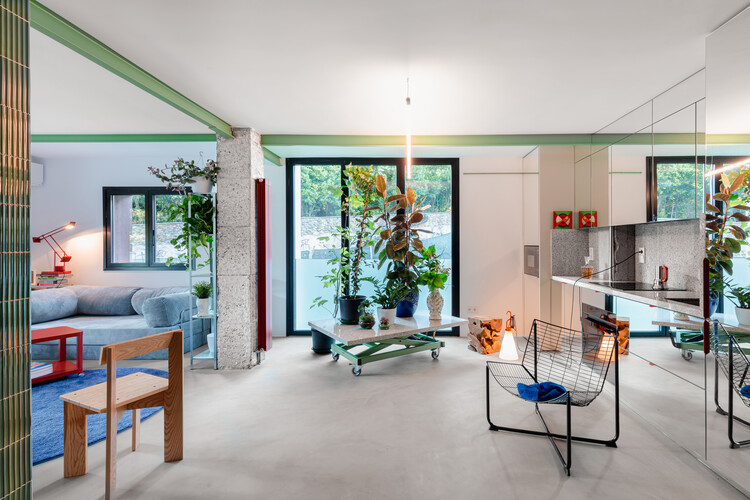
In response to this legacy, the Unplanned Domestic Prototype reassessed the need to adapt to new forms of coexistence emerging in the 21st century. Instead of maintaining the original standardization, space deforms and expands both physically and conceptually. In this way, a dwelling is proposed that multiplies and integrates with other ecosystems, honoring the diversity of social relationships and local ways of life, while advocating for a flexible and unregulated coexistence of future residents.
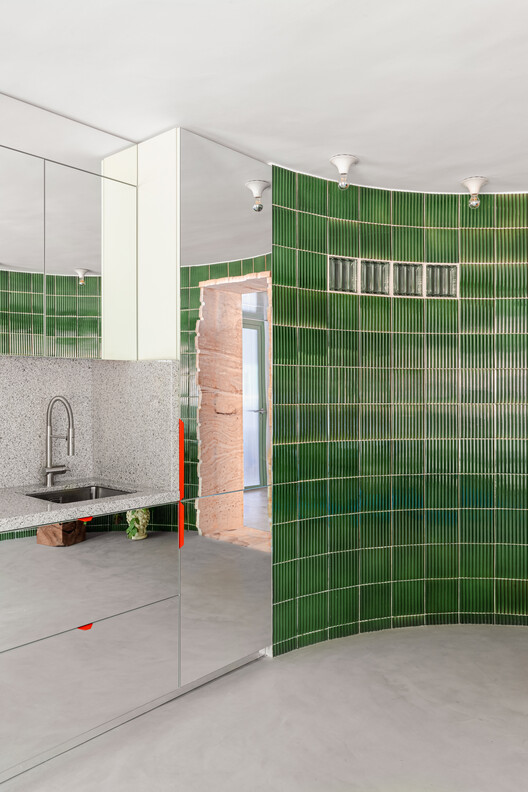
The central element of the intervention is a curved wall made of glazed ceramics, which challenges the logistical conventions of traditional domestic storage. Behind and around this curved wall are positioned a series of pantries, cupboards, kitchen cabinets, bathrooms, shelves and cupboards, transforming it into both an aesthetic component and at the same time a social agglutination and reflection element. At one of its corners, the wall merges into a mirrored display case that hides conventional household appliances. At the same time, a sandstone portal from San Sebastián – the most commonly used stone in the region – segments the wall, revealing in its own section of material the geological layers of the surrounding landscape and the mining methods in local quarries.
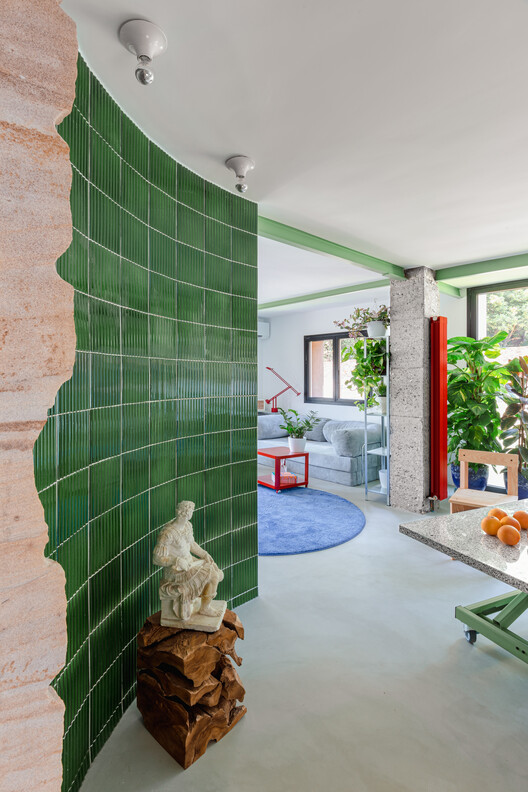
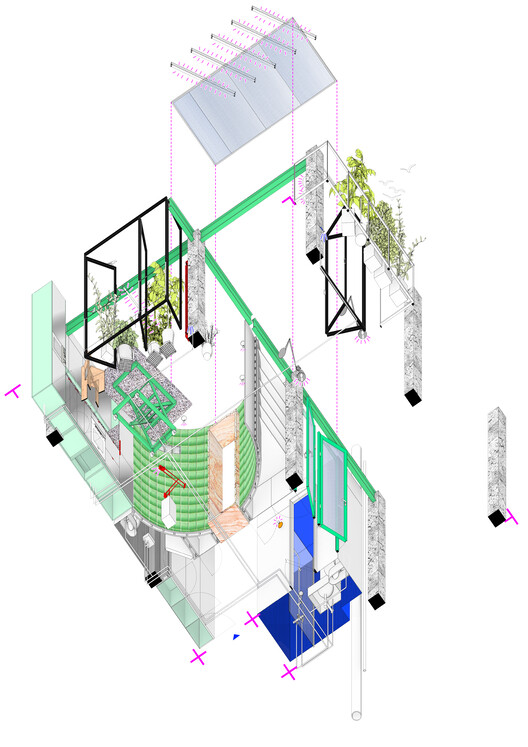
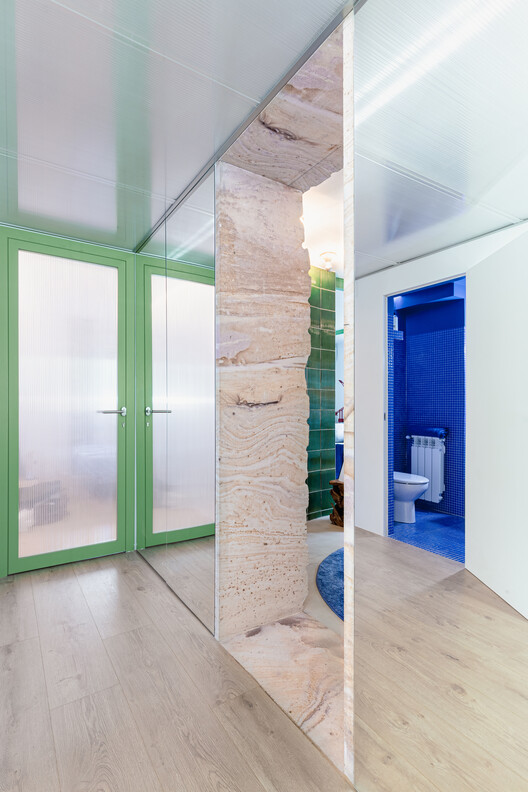
The room is complemented by a number of mobile devices. A liftable island, made from reused national granite and discarded structures from local carpentry workshops, has the ability to orbit in space, increasing its adaptability to different contexts and social gatherings that encourage interaction. In addition, the use of local materials such as reused tree roots for stools and joinery systems made of aluminum and steel from the nearby metallurgical industry, as well as chairs made from recycled aluminum pipes and mobile indoor planting, served by an internal irrigation canal system, strengthens connection with the surroundings and understanding of the productive landscape, which goes beyond the scope of the prototype.
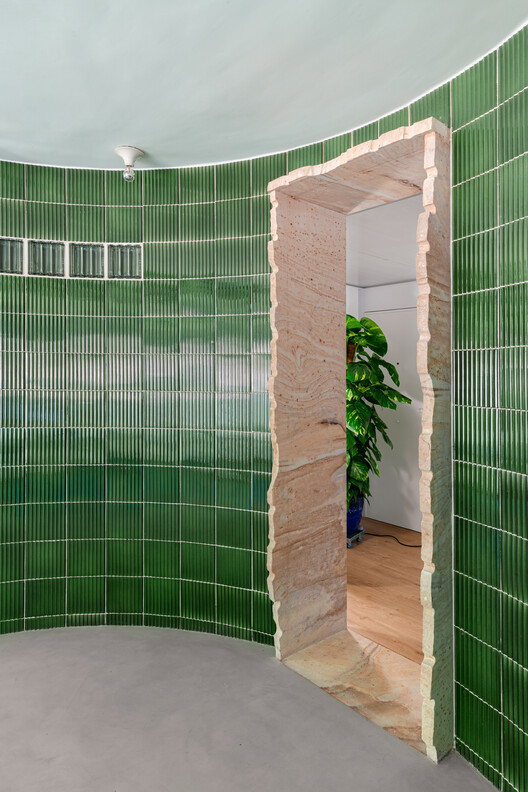
This prototype is proposed as an experiment that aims to provide solutions to current problems of housing reform, integrating sustainability, adaptability and contextual reflection of the affected ecosystems as central axes of its design.
